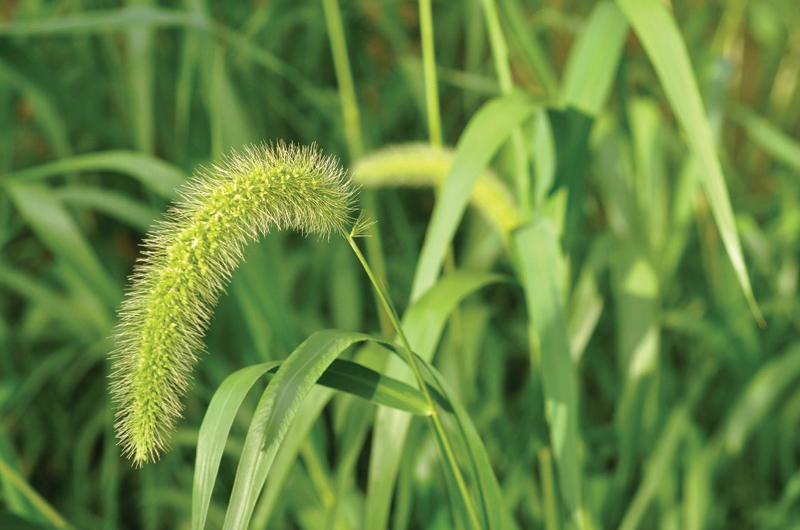
It was September, and pleasant to be in the garden again. The mosquitoes were finally gone – sometimes they last through October on Chappaquiddick. It had been another modest gardening season. Although the kale and zinnias were starting to revive from the August heat, the Swiss chard and beets looked as if I’d planted miniature bonsai varieties. Worms had sneaked their way up each squash stem, and of the few zucchini that reached the kitchen, most had a healthy green worm curled inside. The champion of the garden was the uninvited foxtail grass, whose seed heads were extra long and swooping, full of orderly rows of seeds.
This common weed had first appeared in my garden a couple of years earlier, and each year there was more of it. The wide-blade grass has gracefully arching seed heads that look like foxes’ tails. The online veggie newsletter to which I subscribe says that annual grasses normally produce three to five thousand seeds per plant and that fall is the best time to control weeds. That information may have been in the back of my mind the day of my first scrimmage with the foxtails.
When the mosquitoes aren’t too bad, I wander through my garden once or twice a day to see what’s ready to harvest, to pick some flowers, or just to look at the fruits of my labor. One day, without particularly deciding to, I began pulling off the big elegant seed heads of the waist-high grass. I figured why bother pulling up the whole plant now – the garden is mostly done for the year, and removing the seed heads should keep the grass from starting up next summer.
They were easy to harvest, and although the sharp edges of the grass blades cut my fingers when I wasn’t careful, I didn’t go inside for gloves because that would have meant committing myself to the job. I’m a persistent gardener, in that I keep planting each year despite the results, but I’m a non-methodical one. Though my determination mounted as I went about decapitating the grass, and after two or three times searching through the garden, I couldn’t find any more seed heads. I felt quite satisfied with myself.
A couple of days later when I wandered out to the garden again, I saw that the grass had grown new seed heads – even more than before. These heads were a little shorter, about five inches long compared to the original six inches. Again I pulled off every single one, and for some reason I figured that would be the end of that. Even though I know vegetables and flowers that get picked produce more vegetables and flowers, it was the end of the growing season, so I didn’t think the grass would bother making more seeds.
I was wrong. The next time I went into the garden, after a good rain, there were seed heads sprouting everywhere. Wherever there had been one, there were three or four. Granted, they were even smaller, kind of squirrelly looking, their seed rows patchy and uneven. They didn’t stand up tall and wave, like the “proud to be an American” seed heads of the originals; they hid low near the ground where the grass was denser, like guerilla seed heads. That was the day I decided we were at war. I thought: This grass is smart and sneaky but obviously I can beat it at its simple game.
After that, I’d scout out every seed head a couple of times a week. I refused to give in to a bunch of grass heads. I knew what it was thinking: You’re busy doing a zillion different things, and all I have to do is patiently stand here and produce seeds for the next generation. I thought: We’ll see who has the most resolve.
Soon it became clear just how much easier it would have been to pull up the whole grass plant right at the start. After nearly two months of concerted effort on my part, some of the foxtails were barely a half-inch long and misshapen with crooked rows of seeds, but every plant still had seed heads. Some had as many as thirty!
I began to feel guilty about causing the grass to produce those scrawny, misaligned tails when the original ones had been so graceful and elegant. I finally conceded defeat because I knew I’d never find all the little seed heads hidden deep in the grass. In the end, I had to admit I’d been outwitted by the grass – but the experience left me feeling hopeful for the future of our planet. Maybe nature, through its minute daily workings, will be clever enough to outwit us humans on a grander scale.




